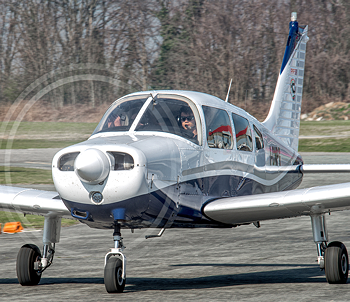Subscriber question:
"How much warm-up is required with an aircraft engine and what are the dangers of taking off with a cold engine?" - Dan M.
Wally:

“Good question and an important topic. First of all, the engine and aircraft manufacturers all publish different requirements. So my first answer to your question is to follow the procedures and limitations recommended by your engine and or airplane manufacturer. Remember they are the experts.
However, your question is what is the danger of taking off with a cold engine? First let’s talk about cylinder head temperature. Setting takeoff power causes a rapid buildup of engine heat. If the cylinders are not yet warm, this rapid temperature change can cause cylinder damage. So it clearly would not be good to go from engine start right to takeoff power. In most situations by the time the run up is complete the cylinder head temperature is OK for takeoff.
Now let’s look at oil temperature, very cold oil is less able to lubricate all those expensive engine parts. Further, the thicker oil causes the oil pressure to be higher and in an extreme case could cause the oil pressure to exceed the maximum allowable pressure on takeoff, possibly causing oil loss. Another danger of taking off with very cold oil is the possibility of the oil congealing in the oil cooler which can block the cooler and result in an extremely high oil temperature.
Not all aircraft need to have the oil temperature in the green prior to takeoff. Some require a specified warm up while others do not. For example, the POHs of many aircraft equipped with Lycoming engines say if the engine is warm enough to take full throttle without hesitation, it is warm enough for takeoff. So in that case there is no requirement to get any temperature, oil or cylinder head up to a specific value. On the other hand, the Cirrus SR-22 POH says the oil temperature should be at least 100F before takeoff. My recollection from flying the DC-3 is that on that aircraft there was a minimum oil temperature specified prior to run up and yet another minimum temperature prior to takeoff.
The greatest engine damage during cold weather operations is caused by allowing the engine to run fast as it is started. It takes a few seconds to get the oil flowing at engine start and the RPM should be kept as low as possible during this time since lubrication is not at its best. Most manufacturers recommend pre heating the engine below certain temperatures to improve early lubrication and reduce engine wear during this critical period.
So, best practice regarding engine warm up is to follow the pilots operating handbook for your airplane, pre-heat when recommended and keep that RPM low when starting.”
